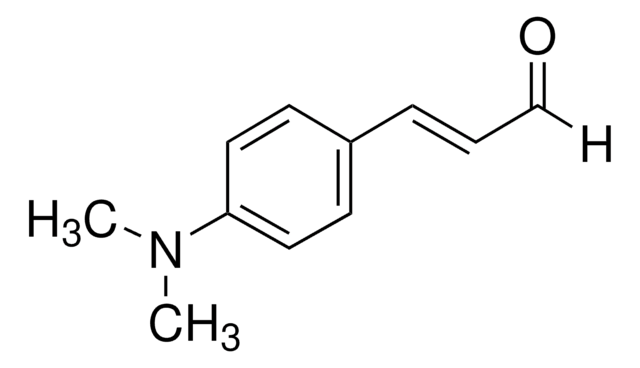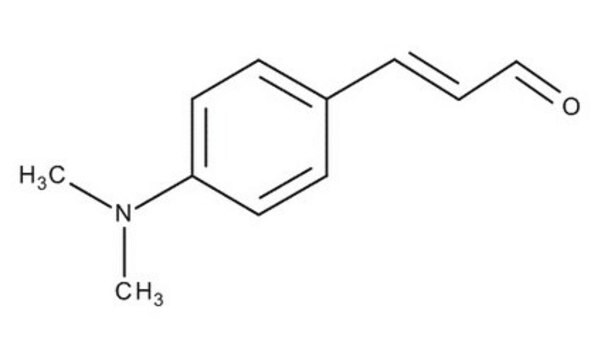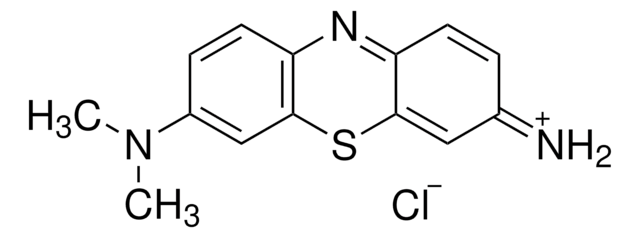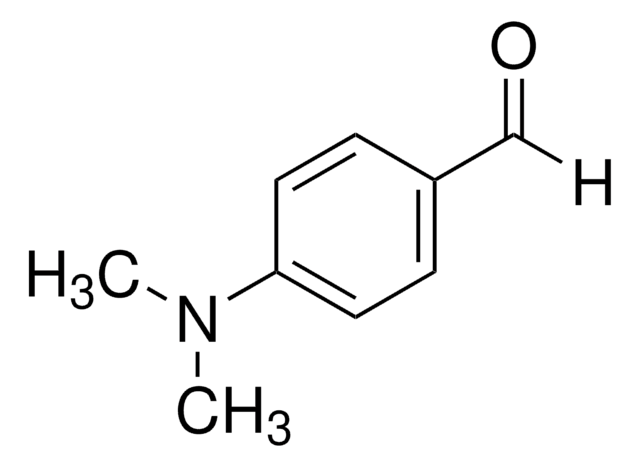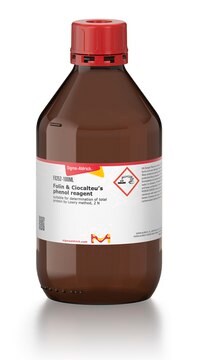Kluczowe dokumenty
49825
DMACA Reagent
suitable for microbiology
Synonim(y):
4-(Dimethylamino)-cinnamaldehyde solution
About This Item
Polecane produkty
metody
microbe id | specific enzyme detection: suitable
Poziom jakości
Zastosowanie
agriculture
environmental
food and beverages
microbiology
przydatność
Escherichia coli
Streptococcus spp.
ciąg SMILES
[H]C(=O)\C=C\c1ccc(cc1)N(C)C
InChI
1S/C11H13NO/c1-12(2)11-7-5-10(6-8-11)4-3-9-13/h3-9H,1-2H3/b4-3+
Klucz InChI
RUKJCCIJLIMGEP-ONEGZZNKSA-N
Opis ogólny
Zastosowanie
Komponenty
Dimethylaminocinnamaldehye 1 g
Hydrochloric acid (concentrated) 1.0 ml
distilled water 99.0 ml
Inne uwagi
Hasło ostrzegawcze
Warning
Zwroty wskazujące rodzaj zagrożenia
Zwroty wskazujące środki ostrożności
Klasyfikacja zagrożeń
Met. Corr. 1
Kod klasy składowania
8B - Non-combustible corrosive hazardous materials
Klasa zagrożenia wodnego (WGK)
WGK 2
Temperatura zapłonu (°F)
Not applicable
Temperatura zapłonu (°C)
Not applicable
Środki ochrony indywidualnej
Faceshields, Gloves, Goggles
Wybierz jedną z najnowszych wersji:
Certyfikaty analizy (CoA)
Nie widzisz odpowiedniej wersji?
Jeśli potrzebujesz konkretnej wersji, możesz wyszukać konkretny certyfikat według numeru partii lub serii.
Masz już ten produkt?
Dokumenty związane z niedawno zakupionymi produktami zostały zamieszczone w Bibliotece dokumentów.
Produkty
Sigma-Aldrich.com presents an article concerning Differentiation of Escherichia coli from coliforms.
Artykuł dotyczący wykrywania, identyfikacji, różnicowania i hodowli gatunków Pseudomonas.
Nasz zespół naukowców ma doświadczenie we wszystkich obszarach badań, w tym w naukach przyrodniczych, materiałoznawstwie, syntezie chemicznej, chromatografii, analityce i wielu innych dziedzinach.
Skontaktuj się z zespołem ds. pomocy technicznej